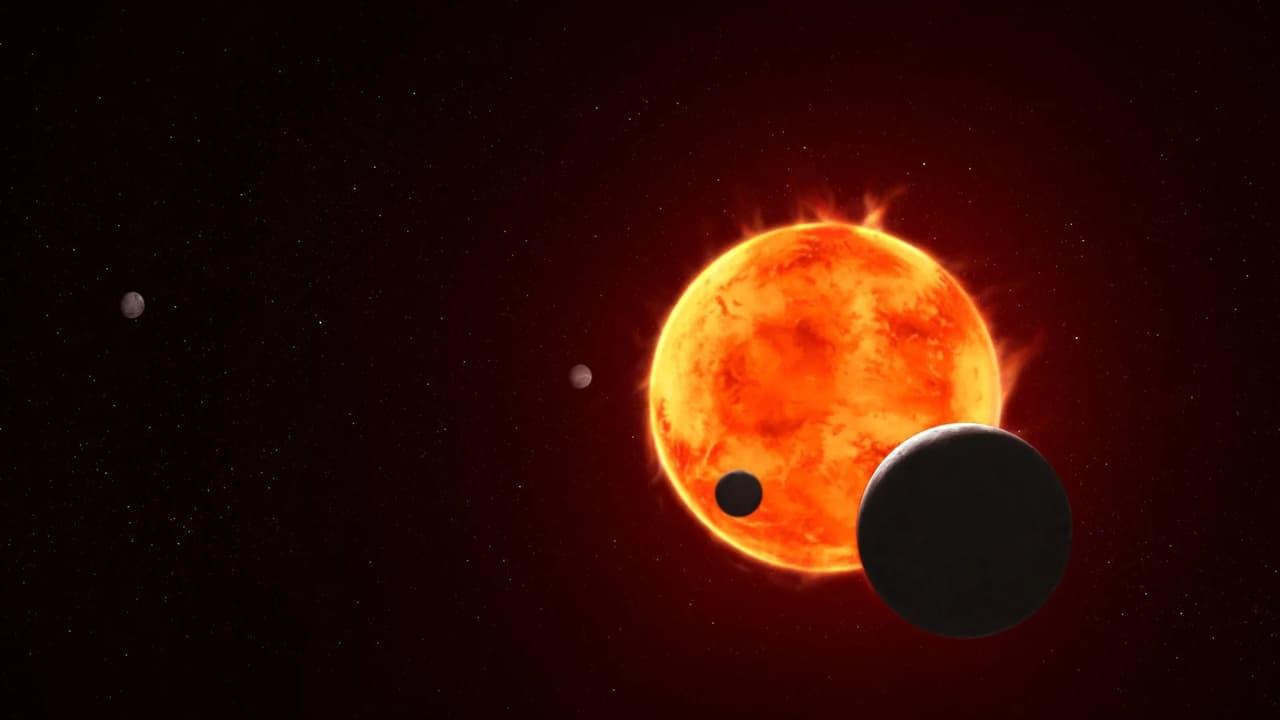Webb Telescope Detects Possible Atmosphere On Earth-Sized TRAPPIST-1E
Astronomers using the James Webb Space Telescope (JWST) have uncovered tantalizing hints of an atmosphere on TRAPPIST-1e, an Earth-sized exoplanet 40 light-years away. This discovery raises hopes that the planet could host liquid water, making it one of the most promising candidates for habitability beyond our solar system.
TRAPPIST-1e: An Earth-Sized World in a Red Dwarf System
TRAPPIST-1e, the fourth planet from its star, orbits a red dwarf known as TRAPPIST-1. Unlike our Sun, red dwarfs are smaller, cooler, and highly active, frequently producing stellar flares. Despite this, TRAPPIST-1e sits comfortably in the star's“habitable zone” - the orbital range where liquid water could exist on its surface.
This world is tidally locked, meaning one side permanently faces its star while the other remains in darkness. If an atmosphere exists, it could redistribute heat, potentially creating conditions suitable for oceans or even ice-covered regions.
How JWST Detected Atmospheric Hints
The team, led in part by the University of Bristol, employed JWST's Near-Infrared Spectrograph (NIRSpec) to observe TRAPPIST-1e as it passed in front of its star. When the planet transits its star, starlight filters through its atmosphere. By analyzing the light that reaches JWST, scientists can detect the fingerprints of gases, including water vapor, carbon dioxide, or other molecules critical for life.
Early data suggest TRAPPIST-1e may have a secondary atmosphere, formed after losing its original hydrogen-rich envelope. This is key because a secondary atmosphere could support liquid water, unlike a primordial hydrogen layer, which is typically inhospitable.
"JWST's observations give us unprecedented detail," says Dr. Hannah Wakeford, Associate Professor of Astrophysics at the University of Bristol. "While we cannot yet confirm a fully developed atmosphere, these first signs are incredibly promising."
Why Secondary Atmospheres Matter
Most planets start with a hydrogen-helium atmosphere after formation. On TRAPPIST-1e, frequent stellar flares may have stripped this early layer away, leaving behind the potential for a heavier, secondary atmosphere. On Earth, our secondary atmosphere - composed of nitrogen, oxygen, and trace gases - allows liquid water to persist and life to flourish.
A secondary atmosphere on TRAPPIST-1e could similarly support oceans, icy caps, or seasonal weather patterns, depending on how gases circulate around the planet's tidally locked surface.
Broader Implications for Habitability
If confirmed, the presence of an atmosphere would place TRAPPIST-1e among the most compelling exoplanets for the search for life. It strengthens the case for water-based habitability beyond our solar system and provides a natural laboratory to study how planets evolve around red dwarf stars.
Researchers are cautious: detecting gases doesn't automatically confirm life. Many chemical signatures can arise from non-biological processes. Still, this study narrows the list of possibilities and guides future observations.
"Each observation brings us closer to understanding these distant worlds," explains Dr. David Grant, co-author of the study. "We are refining our models of exoplanet atmospheres and learning how planets like TRAPPIST-1e could support life."
Next Steps in Exploration
The research team plans to observe additional transits of TRAPPIST-1e, as well as its sibling planets, using JWST. Comparing atmospheric data across the system will help scientists understand the formation and evolution of these Earth-sized worlds.
This work is part of the JWST-TST DREAMS program, an international collaboration including over 30 scientists from the UK, US, and India. By combining state-of-the-art telescopes, advanced spectroscopy, and theoretical models, researchers hope to answer one of humanity's oldest questions: are we alone in the universe?
While it's too early to declare TRAPPIST-1e habitable, JWST's observations mark a major milestone in exoplanetary science. The planet could harbor a secondary atmosphere capable of sustaining liquid water, making it a prime candidate in the search for extraterrestrial life.
The coming years will reveal whether these atmospheric hints translate into evidence of oceans, ice, or even the first signs of alien biology. For now, TRAPPIST-1e remains one of the most exciting worlds in the cosmos, reminding us that the universe still has many secrets to uncover.
Legal Disclaimer:
MENAFN provides the
information “as is” without warranty of any kind. We do not accept
any responsibility or liability for the accuracy, content, images,
videos, licenses, completeness, legality, or reliability of the information
contained in this article. If you have any complaints or copyright
issues related to this article, kindly contact the provider above.
Most popular stories
Market Research

- Alt.Town Introduces $TOWN Token Utility Across Platform Services And Launches Valuefi Deposit Event
- BTCC Exchange Maintains 143% Total Reserve Ratio In September 2025 Demonstrating Continued Financial Strength
- Salvium Solves The Privacy Paradox: Salvium One Delivers Mica-Compliant Privacy That Exchanges Can List
- Zebu Live 2025 Welcomes Coinbase, Solana, And Other Leaders Together For UK's Biggest Web3 Summit
- Tapbit At TOKEN2049: Reshaping The Crypto Landscape Through Product Innovation
- Thrivestate Launches“Fly Before You Buy” Program, Enabling International Buyers To Explore Dubai Before Committing






















Comments
No comment